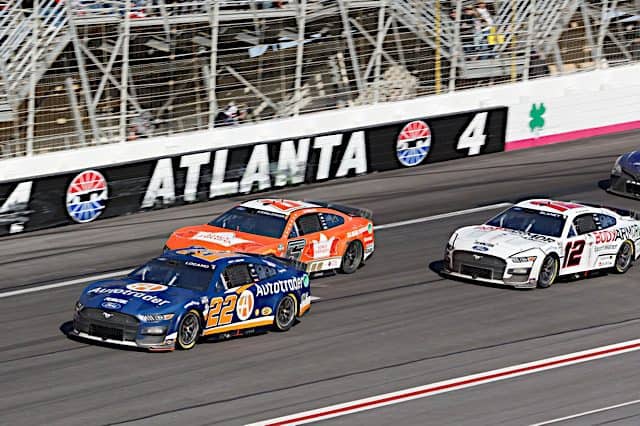If last weekend’s races proved anything about the new version of Atlanta Motor Speedway, they proved that the track remains a relative unknown. Prior to the 2022 season, the venerable 1.5-mile oval was repaved and reconfigured with higher banked, narrower turns. The reconfiguration created a style of racing that more closely resembles a superspeedway than a traditional intermediate track. Yet with such a small sample size of races at the new Atlanta, it was not obvious if the racing there this year might look noticeably different from 2022.
Suffice it to say that Atlanta still races like a superspeedway, and probably will for the foreseeable future. That is not necessarily a bad thing. Superspeedways can produce some of the most thrilling races each year. Other times, superspeedway racing is a mess.
Unfortunately, last weekend’s races from all three national touring series fell into the latter category. Both the NASCAR Xfinity Series and NASCAR Craftsman Truck Series races on Saturday devolved into crash fests. Long caution periods sucked the energy out of both events. The NASCAR Cup Series race was mostly clean and green, but the first two stages felt like a slog as drivers rode in a single file train up next to the wall. It made for a disappointing weekend of racing, especially after the reconfigured Atlanta put on more compelling races last year.
It almost felt like the competitors in all three series were caught off guard by the new Atlanta. After rain washed out all of Friday’s activities, the Cup Series took to the track for qualifying late on Saturday morning. Both BJ McLeod and Christopher Bell had unusual solo spins during their qualifying runs, suggesting that handling could be more of a premium than last year. But that was just a teaser of what came on Saturday afternoon.
Both the Truck Series race and the Xfinity Series race set new records for number of cautions at Atlanta. The Truck race had 11 cautions for 58 laps in a 137-lap race, meaning that 42.3% of the race was run under yellow. The caution statistics for the Xfinity race were nearly the same. There were 12 cautions for 68 laps in a 163-lap race, equating to 41.7% of the race under yellow. To put those numbers in perspective, last year’s April Xfinity race at Martinsville Speedway included 16 cautions for 100 laps in a 260-lap race. Not even that event has a higher percentage of yellow flag laps than what we saw in either race on Saturday.
By that…
Click Here to Read the Full Original Article at …

